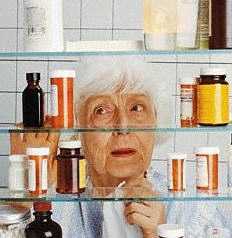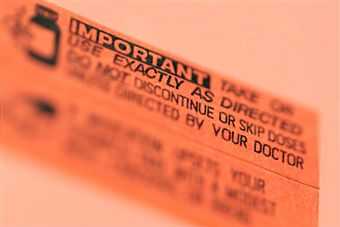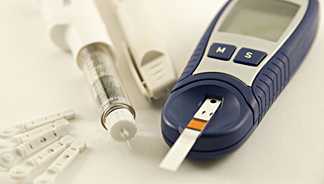Program Focus
Adverse Drug Event Monitoring
There are many ways to measure the size of the harm attributed to the use of medications. Recent work at CDC has focused on the short-term, severe harm that results from medicines taken by people outside of hospital settings. It is estimated that more than 1 million individuals are seen in hospital emergency departments for adverse drug events each year in the United States. Over one-quarter of these patients need to be hospitalized for further treatment.
Adverse drug events are an important patient safety problem, but many are preventable. Patient safety and quality initiatives that focus on the medications and patient age groups most commonly involved in adverse drug events have the greatest potential for reducing the number of emergency department visits caused by adverse drug events.
Leading Causes of Emergency Department (ED) Visits for Adverse Drug Events (ADEs)
- Overall, blood thinners (anticoagulants), antibiotics, diabetes drugs, and opioid analgesics are the most commonly implicated drug classes in ED visits for ADEs.
- Among children and adolescents (19 years old or younger), antibiotics are the leading cause of ED visits for ADEs.
- Among adults 20-64 years old, antibiotics remain a leading cause of ED visits for ADEs.
- Among older adults (65 years old or older), anticoagulants and diabetes drugs are the leading causes of ED visits for ADEs.
Adverse Drug Events in Children

An estimated 71,000 children (18 years old or younger) are seen in emergency departments each year because of unintentional medication poisonings (excluding recreational drug use). Most of these visits (over 80%) were because an unsupervised child found and consumed the medication without adult supervision. Children less than 5 years old are twice as likely as older children to be taken to the emergency department for an adverse drug event, and one out of every 180 two-year-olds visits an emergency department for a medication poisoning annually.
Related Facts Sheets from CDC
For Parents: Young Children and Adverse Drug Events
Top of PageAdverse Drug Events in Older Adults

Older adults (65 years or older) are also twice as likely as others to come to emergency departments for adverse drug events (over 177,000 emergency visits each year). Older adults are nearly seven times more likely to be hospitalized after an emergency visit, but most of these hospitalizations are due to just a few drugs known to require careful monitoring to prevent problems. Common drugs that can require monitoring are blood thinners (e.g., warfarin ), diabetes medications (e.g., insulin ), seizure medications (e.g., phenytoin ), and digoxin (a heart medicine).
Related Facts Sheets from CDC
Adults and Older Adult Adverse Drug Events
Top of PageAdverse Drug Events from Select Medication Classes

Adverse Drug Events from Antibiotics
Antibiotics are one of the top medication classes resulting in emergency department visits for adverse drug events. There are over 140,000 emergency department visits for reactions to antibiotics each year.
- Overall, antibiotics are responsible for almost one out of five (19%) emergency department visits for adverse drug events
- In children (18 years old or younger), antibiotics are the most common cause of emergency department visits for adverse drug events
- Almost four out of five (79%) emergency department visits for antibiotic-associated adverse drug events are due to allergic reactions
Antibiotics are one of the most prescribed medication classes in the United States, which contributes to the high number of emergency department visits for adverse drug events from these medications. But, even after accounting for how often antibiotics are prescribed, the risk of an ED visit for antibiotic-associated adverse drug events is substantial. There is approximately one in 1000 risk that an individual prescribed an antibiotic will require a visit to the emergency department because of an antibiotic side effect but only one in 4000 chance that an antibiotic will prevent a serious complication from an upper respiratory infection. Because most antibiotic-associated adverse drug events are due to allergic reactions, minimizing unnecessary antibiotic use will be the best way to reduce the risk of adverse drug events from antibiotics.
Top of PageAdverse Drug Events from Insulin

Insulin is an important component of diabetes treatment, but can be difficult for some patients to manage due to dosing challenges and need for routine monitoring of blood glucose.
Insulin can cause adverse drug events that lead to emergency room visits.
From 2007 to 2011, nearly 100,000 emergency department visits occurred each year in the U.S. for insulin-related low blood sugar (hypoglycemia) or errors when taking insulin. Of these emergency department visits:
- Nearly two-thirds of the patients had symptoms of severe hypoglycemia, such as shock, seizures, or loss of consciousness.
- Almost one-third of the emergency department visits resulted in hospitalization.
The elderly are most vulnerable to insulin-related hypoglycemia leading to emergency room visits.
One out of every eight insulin-treated patients aged 80 years or older visited the emergency department for insulin-related hypoglycemia or errors. When compared to insulin-treated adults aged 45 to 64 years, those aged 80 years or older were:
- More than twice as likely to visit the emergency department for insulin-related hypoglycemia or an error when taking insulin.
- Nearly five times more likely to be hospitalized.
Meal-related mishaps and taking the wrong insulin product were the most common reasons for emergency room visits from insulin-related hypoglycemia or errors.
Meal-planning is a well-recognized component of diabetes education. However, among the emergency department visits with information on what led to the visit, a meal-related mishap was the most common factor in nearly half of the cases. Common meal-related mishaps include:
- Not eating shortly after taking rapid-acting insulin, such as insulin aspart or insulin lispro.
- Not adjusting insulin doses when eating less.
The second most common factor was patients taking the wrong insulin product, documented in nearly one-quarter of visits with information on what led to the visit. Mixing up rapid-acting and long-acting insulin products was the most frequently reported type of product error. In these cases, more than half the time a patient intended to take a long-acting insulin product, such as insulin detemir or insulin glargine, but took a rapid-acting one instead.
The number of Americans with insulin-treated diabetes has increased in the past decade.
It is important for patients to continue working with their doctors on safely and effectively managing their diabetes. To deliver the safest and most effective care possible, diabetes patient education should continue to emphasize meal-planning and the safe administration of insulin. Balancing the risks with the benefits of diabetes treatment with insulin is now an important component of nationally-recognized diabetes treatment guidelines .
Tip:
To reduce the likelihood of hypoglycemia, plan meals and pay close attention to the insulin products administered
Source:
Geller AI, Shehab N, Lovegrove MC, Kegler SR, Weidenbach KN, Ryan GJ, Budnitz DS. National estimates of insulin-related hypoglycemia and errors leading to emergency department visits and hospitalizations. JAMA Intern Med 2014;174:678-86.
For More Information
CDC Expert Commentary: Hypoglycemia in Insulin-Treated Patients [3:26 min]
Adverse Drug Events from Opioid Analgesics

In the United States, the use of opioid (narcotic) analgesics (pain-relievers) as part of pain management regimens has contributed to a poisoning epidemic. Between 1999-2002, poisonings from opioid analgesics surpassed poisonings from cocaine and heroin as the most frequent type of drug poisoning on death certificates. The increase in drug poisoning coincides with an increase in the prescription of major types of opioid analgesics, as physicians were encouraged to prescribe stronger analgesics (i.e., opioids) for pain management. When sales of opioid analgesics increased, the occurrences of opioid analgesics on death certificates increased at a similar rate. The overall goal should be to identify ways to reduce deaths from opioid analgesics without diminishing the quality of care for patients with a legitimate need for pain management.
Related Facts Sheets from CDC
Poisoning in the United States: Fact Sheet
For More Information
- Unintentional Drug Poisoning in the United States, CDC [PDF – 4 pages]
- Increase in Fatal Poisonings Involving Opioid Analgesics in the United States, 1999-2006, CDC [PDF – 8 pages]
- Page last reviewed: June 13, 2014
- Page last updated: June 19, 2017
- Content source:



 ShareCompartir
ShareCompartir